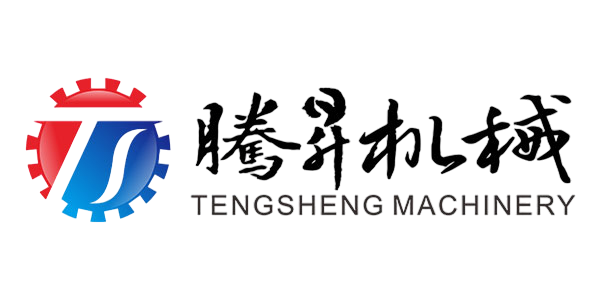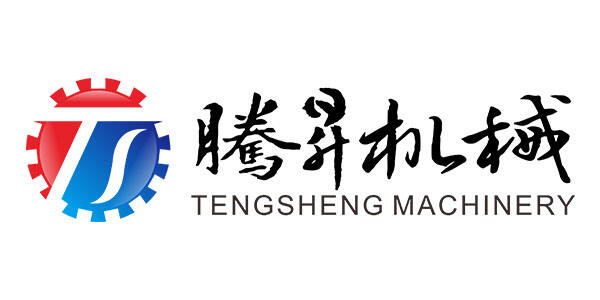The introduction of Dual Drying Systems (DDS) marks a real step forward when it comes to cutting down on energy use in industrial vegetable dehydration processes. Traditional approaches typically depend on just one method for drying, while DDS combines two distinct techniques: convective and conductive drying. By employing these different ways of transferring heat, the system removes moisture much more effectively than single-process alternatives, which means less time spent waiting and lower energy bills. According to recent research, facilities implementing DDS technology report around a 30% drop in their energy consumption compared to older models still in operation today. An added benefit lies in how DDS handles wasted heat during processing. Instead of letting it go unused, the system captures and reuses this excess thermal energy, significantly cutting down on losses and boosting operational efficiency across the board.
Looking at fuel savings, DDS dehydrators beat out traditional models pretty handily. Their dual drying system actually uses less energy overall while cutting back on how much fuel they need because they make better use of available heat. A real world test at one big vegetable processing facility found these DDS units cut fuel usage down around 25 percent compared to regular equipment. That kind of saving adds up fast for operators. Plus, there's the environmental angle too. Less fuel means fewer emissions, which helps companies stay compliant with those ever tightening environmental regulations. For farms and food processors trying to run things sustainably, this technology represents a smart investment that pays off both financially and ecologically over time.
High volume producers will find DDS tech delivers serious cost advantages down the road. While there's upfront expense for the equipment, most operators report getting their money back pretty fast because running costs drop and repairs happen less often. According to several farming journals and industry insiders, farms that switched to DDS typically recoup their investment somewhere between year two and year three. The main reasons? Lower power consumption compared to traditional methods, fewer broken parts needing replacement, and almost no production interruptions when things break down. For anyone planning expansion while keeping environmental impact low, DDS dehydrators just make good business sense in the long run.
The dry bulb and wet bulb sensors are really important for keeping those exact drying conditions needed when preserving food. The dry bulb basically measures what the air temperature actually is, whereas the wet bulb gives us an idea about how much moisture there is in the air. When we combine readings from both types of sensors, we get good information to tweak humidity and temperature settings so our dehydrators work properly. Getting these conditions right makes all the difference for keeping dehydrated veggies tasting fresh and lasting longer on shelves. Some research shows that folks who use these sensors tend to see better results from their drying processes, which means food stays preserved better overall.
Keeping temperatures and humidity within certain ranges matters a lot when it comes to keeping nutrients intact in dried veggies. When we get those settings just right, the whole drying process stays consistent from start to finish. This consistency helps lock in important vitamins and minerals that tend to disappear when exposed to fluctuating heat levels. Studies have shown time and again that good temperature management makes all the difference for nutrient preservation because prolonged exposure to high heat basically cooks away what makes these foods healthy. For anyone looking to make or buy quality dried produce, getting familiar with how these factors work together means ending up with something that still packs nutritional value instead of turning into flavorless mush. Health minded folks definitely notice the difference.
Combining dehydrators with vegetable washing equipment makes good business sense for food processors looking to cut costs. When these systems work together automatically, moving produce from wash tanks straight to dryers saves both time and money on staffing. The whole line runs smoother when everything connects properly. Take a typical setup where veggies go through washing, slicing, then dehydration all in one continuous flow. Less manual handling means fewer mistakes during processing. Plus, workers don't have to monitor multiple separate machines constantly. Food manufacturers report about 30% faster throughput when these systems are integrated properly. Better still, product quality stays consistent because temperature and humidity levels remain stable across all stages of preparation rather than fluctuating between different pieces of equipment.
The simplicity of one-button operation really takes the guesswork out of using a dehydrator, which is why so many people find them so easy to handle. When there's less complexity involved, users actually get better control during those drying cycles, and we all know how frustrating it can be when our dried fruits or veggies come out inconsistent. The best part? These straightforward systems let folks adjust settings quickly for different kinds of food - apples need something different than mushrooms after all. Food preservation enthusiasts regularly highlight how much better their end products turn out with these automated controls, and most will tell you they sleep better at night knowing their snacks are drying properly without constant monitoring.
When dehydrators get smart programming, they cut down on labor expenses because so many repetitive jobs just run themselves without someone watching every minute. Companies save money when these machines handle the day-to-day work instead of paying staff to do it manually. What's interesting is how automation actually makes workers more productive over time. Instead of spending hours monitoring dehydration cycles, employees can focus on quality control checks or maintenance work that matters more. Factory managers tell stories about how their teams became more efficient after installing automated systems. One plant manager mentioned they were able to reallocate two full-time workers to customer service roles, which boosted satisfaction rates across the board while keeping production numbers steady.
When dehydrators work well with other machines like meat grinders and cheese processors, they bring real advantages to food production lines. The ability to connect different equipment lets factories offer more products and streamline their processes for whatever the market needs at any given time. Equipment that does multiple jobs fits right into most existing setups without causing major disruptions, which means less waiting around when switching between tasks and ultimately gets more done throughout the day. Many dairy processors and meat packers have already seen what happens when these systems come together properly the result is often faster operations and new items appearing on store shelves that customers didn't know were coming.
When it comes to lasting power against corrosion, stainless steel stands out as the go-to material for industrial dehydrators. The metal simply holds up better than alternatives when faced with tough industrial conditions where moisture hangs around and temperatures fluctuate constantly. Take the seafood processing sector for example stainless steel equipment doesn't rust like cheaper options do, so machines last much longer in these damp environments. Research indicates that dehydrators built with stainless steel frames tend to stick around two to three times longer compared to similar units made from other metals. This means fewer replacements needed over time and greater dependability when operations are running at full speed through long shifts.
Wedge wire screens and tapered screw designs cut down on maintenance headaches for plant operators. These components make cleaning much simpler, something that matters a lot when it comes to keeping food processing areas sanitary. When equipment stays clean, it runs better and spends less time offline during maintenance breaks. Industrial kitchens know how important this is since every minute counts in production schedules. Take orange juice machines as an example they often come with complicated internal parts that are tough to reach and clean thoroughly. The straightforward design of wedge wire systems gives manufacturers a real edge here, allowing technicians to get things cleaned up quickly without missing spots where bacteria might hide. This means cleaner operations overall while still meeting strict industry sanitation requirements.
When looking at how much maintenance industrial dehydrators need compared to those orange juice machines, there's a pretty big gap between them. Dehydrators usually have parts that are straightforward to clean, so they don't need as much attention from technicians. This means lower maintenance bills down the road for facilities using them regularly. On the flip side, orange juice machines tend to require service every few weeks because of all that pulp and citrus residue sticking around inside. Some plant managers report spending twice as much on repairs for these machines than their dehydrator counterparts. Regular cleaning actually makes these machines last longer according to field technicians who work on them daily. For factory owners trying to decide what kind of equipment to buy, knowing about these maintenance patterns helps weigh upfront prices against what it'll cost to keep running smoothly year after year.
Businesses need dehydrators when they want to keep up with changing production requirements across different batch sizes. What makes these machines so valuable is their ability to scale up or down depending on what the market demands at any given time. Small operations can start with modest setups while larger manufacturers benefit from expanded capabilities without having to invest in entirely new equipment every time things change. Take the food sector for example seasonal fruits and vegetables create all sorts of challenges during peak harvest seasons. A good dehydration system lets processors handle those surges without wasting resources or overworking staff. The same goes for cosmetic products too. When certain ingredients become popular overnight, companies with scalable drying solutions simply ramp up production rather than scrambling to find alternatives last minute. This kind of adaptability saves money and headaches alike.
Take for instance what happened when we looked at drying 500 kilograms of mangoes in each batch run through the industrial dehydrator system. The way they set things up really showed off how these big machines can handle serious volumes without breaking a sweat. What stood out was how they broke down the whole drying process into distinct phases with strict timing controls between them. This approach helped preserve most of the fruit's original taste and nutritional value too. Looking at actual numbers from that operation, they managed to get through about 90% of the product efficiently in each cycle. Pretty good considering the scale involved. For food processors dealing with bulk orders, this kind of performance makes all the difference when trying to keep costs down while still meeting quality standards across thousands of units.
Dehydrators are pretty adaptable when it comes to handling those big swings in vegetable availability across different seasons. Farmers know their crops won't always come in at the same rate year after year, so these machines need to handle whatever volume shows up on any given day. Modern tech has made this possible through better control systems that let operators adjust everything from batch size to drying duration based on what's actually coming through the door. Take carrot processors for instance they often run into situations where they suddenly get twice as much product as usual during peak harvest months. The ability to scale operations up or down keeps things running smoothly even when Mother Nature throws curveballs. Some companies have invested heavily in equipment that literally switches between tomato dehydration and bell pepper processing within minutes, which cuts way down on wasted time and resources compared to older models that required complete shutdowns between product types.
Dual Drying Systems (DDS) incorporate both convective and conductive drying techniques to efficiently remove moisture in industrial vegetable dehydrators, reducing energy consumption.
DDS dehydrators reduce fuel consumption by about 25% when compared to traditional models by utilizing heat more efficiently.
Stainless steel construction offers durability and corrosion resistance, making it ideal for harsh environments typical in food production industries.
One-button operation simplifies dehydrator use by providing precise control over drying cycles, ensuring consistent results.
Scalability allows industrial dehydrators to handle varying batch sizes to match commercial production needs, ensuring efficiency despite demand fluctuations.


Copyright © 2024 Zhaoqing Tengsheng Machinery Co., Ltd all rights reserved - Privacy policy